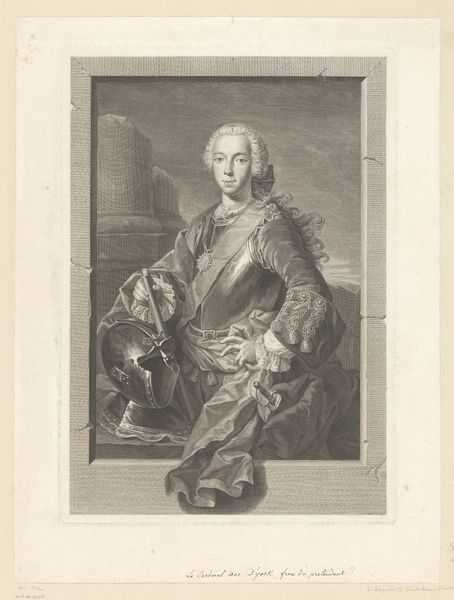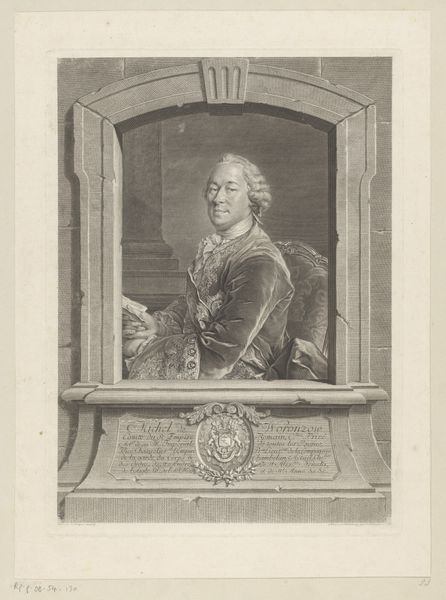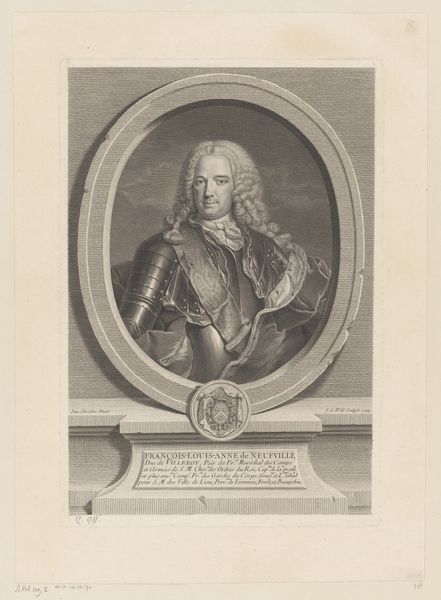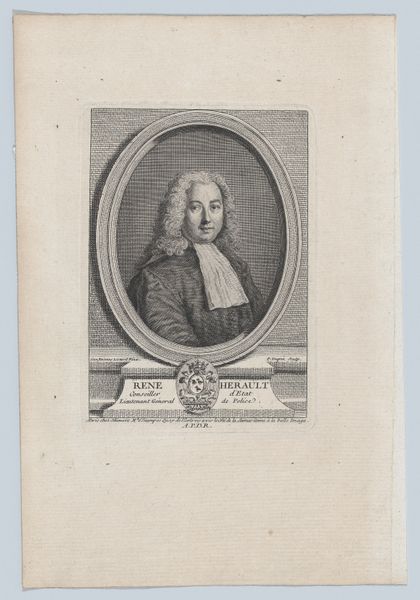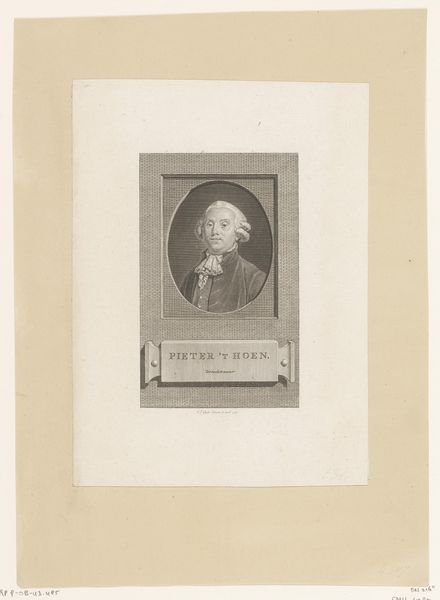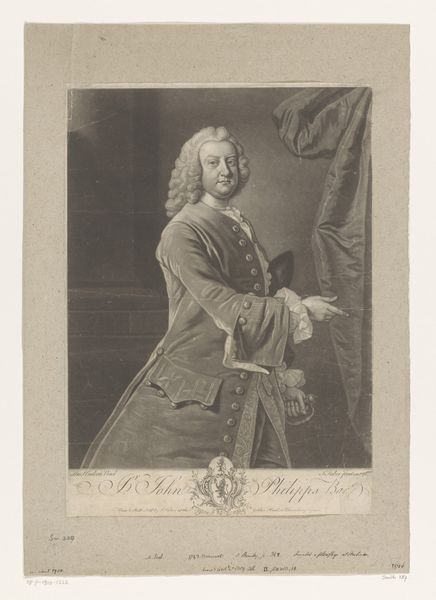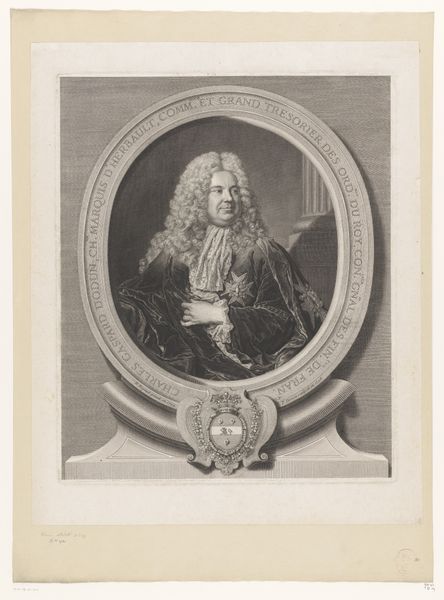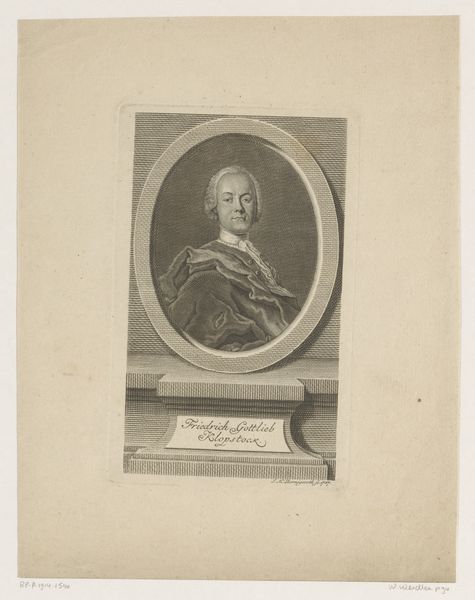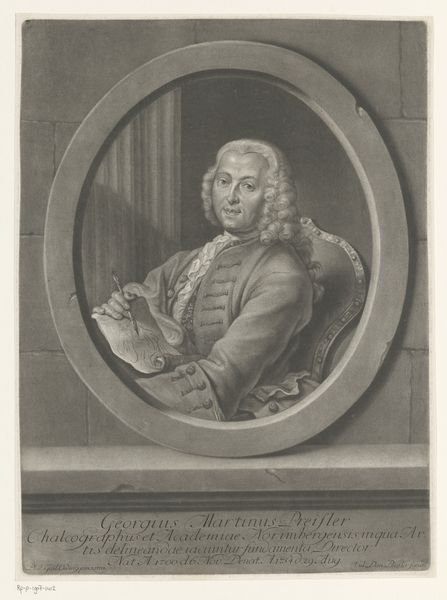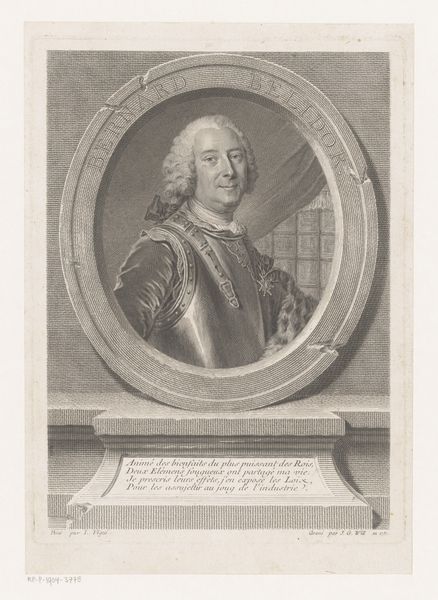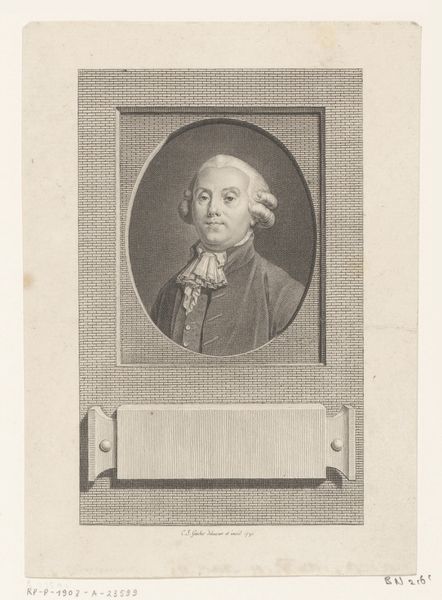
drawing, paper, engraving
#
portrait
#
drawing
#
baroque
#
figuration
#
paper
#
line
#
academic-art
#
engraving
Dimensions: height 195 mm, width 120 mm
Copyright: Rijks Museum: Open Domain
Curator: Standing here, we are looking at Johann Georg Wille’s “Portret van Claude Nicolas Le Cat," created in 1747. It's a compelling portrait rendered as an engraving, now residing at the Rijksmuseum. Editor: Oh, my. He does look rather pleased with himself, doesn’t he? Like a cat that's gotten the cream, but in wig form! The delicate lines give it such a poised, almost self-satisfied air. Curator: The means of production here are key. Wille, as an engraver, wasn't just an artist, but also a craftsman, skilled in reproducing images. This piece is more than just a likeness; it's a printed commodity intended for wider consumption. Note the quality of line on the paper, each one is laid down deliberately to create depth, tone, and form. Editor: Precisely! And there’s a curious tension in the material. The crisp precision contrasts amusingly with the rather theatrical fluff of the man himself. His lace! His wig! It feels almost like a comment on the vanity of the elite. A witty barb disguised as elegant flattery, wouldn't you agree? Curator: Flattery had its place, certainly, but engravings like these also served the scientific community. Le Cat was a famous surgeon. And so, Wille created something functional and decorative for distribution to the wider society, reflecting Le Cat's social standing and scientific credibility. It highlights how prints operated within networks of power and knowledge. Editor: I can see that. And thinking about the role of prints –imagine stumbling upon this in a doctor's office. I wonder if his pose would have calmed or intimidated patients! All the layers and lace—almost like he is being presented for dissection. What’s your sense? Curator: This really pushes us to question where we place value. Is it on artistic labor? On scientific knowledge? The value assigned to these sorts of engraved likenesses ebbs and flows through time based on complex socio-economic forces. Editor: Very true! Makes you wonder who will want our portraits in 300 years, doesn't it? What stories those pictures, filtered through changing markets, will tell. Anyway, thank you for contextualizing my spontaneous musings and lending insight into materials. Curator: Indeed, a welcome provocation. Reflecting on it all, understanding these historical dynamics makes engaging with art so much richer and interesting for wider audiences today.
Comments
No comments
Be the first to comment and join the conversation on the ultimate creative platform.


